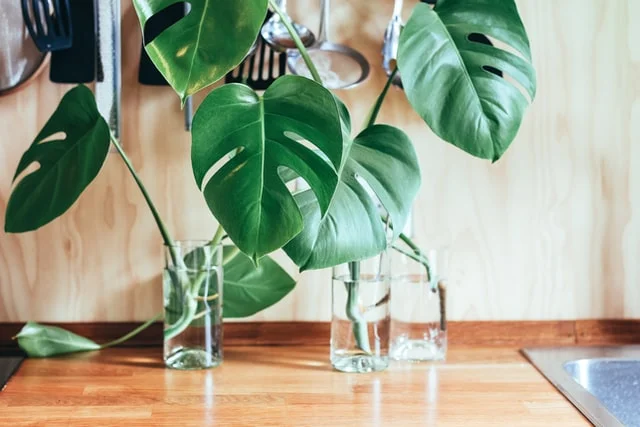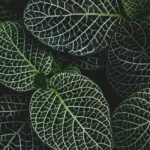Table of Contents
Caring for Monstera Epipremnoides
The Monstera epipremnoides, commonly referred to as a Swiss Cheese Plant (although that’s also used to refer to the related Monstera adansonii), is hard to find but greatly coveted.
It’s not very common yet as a houseplant, but a quick image search for virtually any tropical plant will return at least one photo of the Swiss Cheese Plant.
It’s also generally possible to find as long as you’re willing to spend a bit more than you would for the average houseplant.
The Monstera epipremnoides has large leaves with naturally occurring holes that seem irregular, hence the name Swiss Cheese Plant.
There’s some debate as to the proper naming of the plant referred to as Monstera epipremnoides, but there’s general agreement as to how to care for these plants.
For example, if the Monstera epipremnoides is actually a larger, brighter version of the Monstera adansonii, it is still going to be a fan of moderate to bright, indirect light.
Helping Your Monstera Epipremnoides Thrive
Monstera epipremnoides is fairly hardy once it’s stabilized and mature. It’s not more difficult than other tropical plants, so if you’re used to taking care of tropical plants, you’ll likely find this one to be a breeze.
The Monstera epipremnoides is a vining plant, which means it needs room to spread out or drape or hang, or it needs something to climb, depending on where you want to place it and how you want it to look.
A thriving Monstera epipremnoides can grow to as much as 8 feet long or tall, with individual leaves up to 21 inches long and 13 inches wide. It’s a slow growing plant, but it can reach more standard growth speeds with a carefully applied fertilizer.
Light Requirements
The Monstera epipremnoides can survive in lower light, but it really appreciates moderate to bright, indirect light. Direct light can quickly scorch the leaves, especially if the sun is particularly hot, such as in summer or in hot climates.
If leaves grow darker or droop, your plant may need a little more light.
Temperature Requirements
The Monstera epipremnoides enjoys warm temperatures. It can survive temperatures as low as 55 degrees, but it does better at 60 or above, and is more likely to thrive the closer you can get it to 80 degrees Fahrenheit. Be careful not to place the plant in the path of any drafts.
Soil Requirements
Like most tropical houseplants, the Monstera epipremnoides does best with well-aerated, well-draining soil.
Organic matter such as bark or peat can help retain the right amount of moisture, and perlite or gravel also helps with that perfect moisture level. Also be sure that the pot allows for proper drainage and doesn’t get blocked.
Humidity Requirements
The Monstera epipremnoides thrives in high humidity. If you live somewhere with low humidity, consider increasing the ambient moisture. You can put a pebble tray under the pot, keep several plants together so that watering creates humidity, or invest in a humidifier.
How to Water Your Monstera Epipremnoides
Water your Monstera epipremnoides when the top inch or two of soil starts drying out. This will probably be about once a week in summer and once every 10-14 days in winter, but keep an eye on the moisture levels. If the soil is still pretty wet, it’s not time to water it again yet.
How to Fertilize Your Monstera Epipremnoides
The Monstera epipremnoides grows slowly unless it’s given fertilizer, but it’s quite prone to mineral burn from receiving too much fertilizer.
As a result, the most common recommendation is to use a diluted fertilizer just a few times a year, during the growing seasons of spring and summer.
Pruning Your Monstera Epipremnoides
As a large, vining plant, the Monstera epipremnoides may need frequent pruning to stay under control. However, keep in mind that this plant does grow fairly slowly, so pruning won’t become a full-time job!
Prune the plant as needed to fit in the space available or if the plant starts getting sparse or leggy.
Propagation of Your Monstera Epipremnoides
The Monstera epipremnoides is easily propagated via cutting. You’ll want a cutting about an inch or two below a leaf, with 2-3 leaves attached. Plant this in moist soil.
Most plants need a little extra TLC until they’ve taken root, and many benefit from having the stems dipped in root hormone before planting.
Your Monstera may need even a little more attention than most when it’s newly planted since they don’t really get hardy until they’re well established.
Pests and Diseases
Other than root rot, Monstera plants aren’t terribly susceptible to disease. Avoid root rot by making sure you do not water the plant too soon; root rot is caused by roots staying too wet, especially when the roots are thin.
Watch for yellowing, washed-out leaves, which are typically a sign of overwatering.
Your plant may attract pests, especially since the leaves can grow so large, giving pests ample space to hide. If leaves become dull, be sure to check underneath the leaves for any signs of infestation.
Ridding Your Monstera Epipremnoides of Pests
Whether spider mites or scale bugs, infestations can generally be treated the same way. Use a damp cloth and manually remove any signs of infestation.
If there’s too much of it or too much movement for easy control, consider an insecticide before cleaning. Then, apply a gentle insecticide or neem oil to kill any remaining bugs and prevent reinfestation.
Be sure to check any nearby plants for signs of infestation, too, and consider treating them preemptively, especially if the infestation was a large one.
Toxicity
Monstera plants are toxic when ingested by humans or pets. This can cause stomach irritation, blistering of the esophagus, and hives.
With any toxic plant, it’s a good idea to use gloves if you have sensitive skin or are planning on prolonged contact, such as when pruning.
Quick Reference
- Light: Moderate to bright, indirect
- Temperature: 55-80 degrees Fahrenheit
- Soil: Well-draining and aerated
- Humidity: High
- Water: When top 1-2 inches is drying
- Pruning: As needed for size or aesthetics
Photo by Brina Blum on Unsplash



